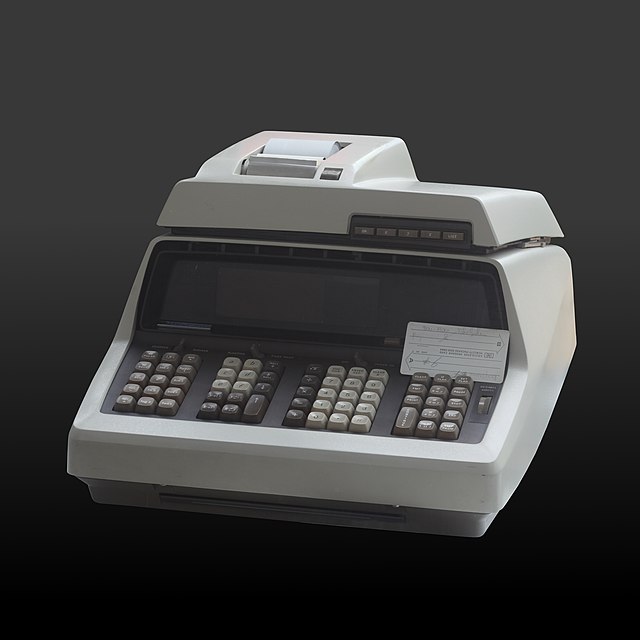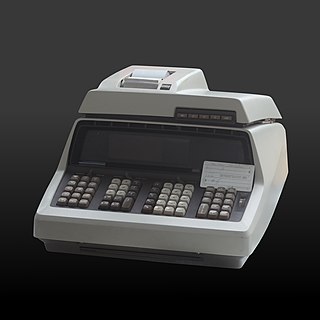Top Qs
Timeline
Chat
Perspective
Hewlett-Packard 9100A
Programmable calculator From Wikipedia, the free encyclopedia
Remove ads
The Hewlett-Packard 9100A (HP 9100A) is an early programmable calculator[3] (or computer), first appearing in 1968. HP called it a desktop calculator because, as Bill Hewlett said, "If we had called it a computer, it would have been rejected by our customers' computer gurus because it didn't look like an IBM. We therefore decided to call it a calculator, and all such nonsense disappeared."[1]

An ad for the 9100A in 1968 Science magazine contains one of the earliest documented use (as of 2000) of the phrase personal computer.[2]
Remove ads
History
Summarize
Perspective

The unit was descended from a prototype produced by engineer Thomas "Tom" E. Osborne, who joined the company when HP decided to adopt the project.[4][5][6]
An engineering triumph at the time, the logic circuit was produced without any expensive integrated circuits, the assembly of the CPU having been entirely executed in cheaper discrete components. With CRT readout, magnetic card storage, and printer, the price was around US$4,900 (equivalent to $44,000 in 2024).[7]
Thanks to its high speed of operations which was an order of magnitude faster than competitors[8] – addition or subtraction took just 2 ms, multiplication 22 ms and division 27 ms – the device could quickly execute not just regular trigonometric functions (330 ms) or logarithms (130 ms) but many iterative computations when following a program.[9] This made the 9100A the first scientific calculator by the modern definition, and also marked the beginning of Hewlett-Packard's long history of using Reverse Polish notation (RPN) entry on their calculators.
Due to the similarities of the machines, Hewlett-Packard was ordered to pay about $900,000 in royalties to Olivetti after copying some of the features adopted in the Programma 101, like the magnetic card and the architecture.[10][11]
Remove ads
See also
References
External links
Wikiwand - on
Seamless Wikipedia browsing. On steroids.
Remove ads
